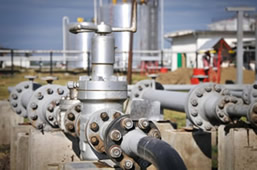GRAPHALLOY®
GRAPHALLOY® bearings and bushings are used in many low viscosity pump applications to help eliminate operational problems due to potential flashing and the low lubricity nature of these liquids. Pumping fluids with low lubricity such as LNG and Natural Gas Liquids (NGLs) can be especially difficult for metallic bearings. The hydrodynamic film provided by these low lubricity liquids is unable to provide sufficient lubrication, which can lead to metal-on-metal contact, galling or seizing. Recently, a customer contacted engineers at Graphite Metallizing with a special request. Their company was providing single-stage, axial-split case, double-suction, between bearings pumps for a Floating Liquid Natural Gas (FLNG) ship prototype. The customer contacted us because they knew that the non-galling, self-lubricating features of GRAPHALLOY would allow the pumps to continue working even when experiencing run-dry, flashing or cavitation. The bushings were needed in a hurry. Because the pumps would be installed at the bottom of the ship, they needed to be in place before further construction could proceed. As the project manager described the situation, “timely completion of a multi-billion dollar project depends on timely delivery of our pumps.” The project involved multiple pumps of several different sizes. A further complication was the need for metal holders in both 316 and duplex stainless steels. With tightly coordinated actions, Graphite Metallizing and the customer's personnel solved the problems of procuring the holders, re-machining the GRAPHALLOY bushings and adjusting the drawings. This was completed within an aggressive time frame so that the customer could honor its delivery commitments to the end user. Click here for more information about GRAPHALLOY's success in troublesome pump applications. GRAPHALLOY bearings and wear rings allow for tighter clearances which improve reliability, lower vibration and increase efficiency in vertical and horizontal pumps.
|
